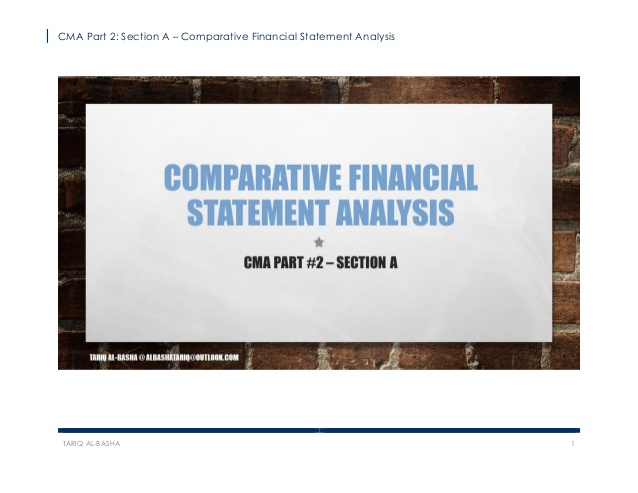
They also pitched for deferment of principal repayments by 50 systemically important NBFCs and housing finance companies for a specified period. One of the most important functions of RBI is to work as regulator and supervisor of financial system. The SBI suggested that a formal arrangement can be worked out wherein the Government of India can commit to adjust the haircuts that come the banks’ way by settling it with RBI’s dividend transfers. Adam Hayes, Ph.D., CFA, is a financial writer with 15+ years Wall Street experience as a derivatives trader. Besides his extensive derivative trading expertise, Adam is an expert in economics and behavioral finance.

The NBFC sector has been in turmoil since 2018 after the collapse of infrastructure lender IL&FS. Asked several times, the RBI has refused to play its role as the lender of last resort, terming the problem at select NBFCs as one created because of asset-liability mismatches. In its report on Budget expectations, the economists said RBI should “seriously think” of providing liquidity to non-banking financial companies (NBFCs) against the assets held by the lenders. As the NBFC continues to be in distress, economists at SBI on Friday called for the Reserve Bank of India (RBI) to play its role as the lender of last resort — something that the central bank has avoided since the start of troubles in 2018.
Lender of Last Resort: Function and Examples
Adam received his master’s in economics from The New School for Social Research and his Ph.D. from the University of Wisconsin-Madison in sociology. He currently researches and teaches economic sociology and the social studies of finance at the Hebrew University in Jerusalem. Since its inception, many serious candidates have achieved success in various Government jobs and TEMS continues to strive for betterment of material and success of students.
The national central banks in the euro area offer the last safety net for banks that cannot get the funding they need elsewhere. In the euro area, ELA loans are provided by the national central bank of the country in which the struggling bank is based. Allen and Gale[11] introduced an interbank market into the Diamond–Dybvig model to study contagion of bank panics from one region to another.
When commercial banks have exhausted all resources to supplement their funds at times of liquidity crisis, they approach Central Bank as a last resort. This saves banks from possible failure and banking system from a possible breakdown. On the other hand Central Bank, by providing temporary financial accommodation, saves the financial structure of the country from collapse. National central banks accept collateral of a lower quality for ELA loans than for non-emergency funding.
So does this mean that banks in financial difficulties will always be rescued, no matter what?
Cases of bank runs became prevalent during the Great Depression of the 1930s after the stock market crash. There were a series of banks runs and subsequent collapses, amidst rumors of an impending financial crisis. In a move to prevent more bank failures, the government declared a national bank holiday to allow for the inspection of banks. The last-resort lending function came into being in the late 1800s due to a series of panics that engulfed the banking industry. The panic led to the collapse of financial institutions, and this led to the loss of customers’ funds deposited in the institutions. A model developed by Flannery[19] suggests that the private market for interbank loans can fail if banks face uncertainty about the risk involved in lending to other banks.

Although it helped prevent the collapse of banks in the past, critics say that by providing additional liquidity, the central bank tempts banks to take on more risks than necessary. Central banks have traditionally held this role because they are primarily the ones responsible for ensuring that financial markets function smoothly and the financial system is stable. In this way they help protect people and businesses from the difficulties that can arise when banks are in trouble. The government also enacted new regulations that required banks to hold a certain percentage of reserves.
Since this increases their risks, the central banks apply a haircut to the collateral and charge banks a higher interest rate. While national central banks are responsible for providing ELA, their lender-of-last-resort activities are checked and monitored by the ECB. The ECB’s Governing Council may restrict or object to emergency assistance if two-thirds of its members agree to do so. They may only object, however, if they believe ELA would interfere with the ECB’s monetary policy or with the Eurosystem’s objectives and tasks. A bank run occurs when large numbers of customers withdraw their deposits simultaneously for fear that the bank might collapse.
Financial Analyst Certification
We are committed to help you in this journey of patience and perseverance with dedication.
Former RBI Deputy Governor Thorat On Internationalization of Rupee – Bloomberg
Former RBI Deputy Governor Thorat On Internationalization of Rupee.
Posted: Wed, 21 Jun 2023 07:00:00 GMT [source]
Economists at the State Bank of India (SBI) have reminded the central bank that they should not forget their primary function of being the lender of last resort. In a nutshell, when a central bank acts as lender of last resort, it can prevent a lot of difficulties for people and businesses. Firstly, write the various functions performed by RBI – Monetary Policy of the Country, Inflation control, Decides benchmark interest rate, Government’s banker and Regulator of Foreign Exchange etc. The central bank assists such banks through discounting of approved securities and bills of exchange. The economists said the measures taken so far by the government and RBI have been focused on long-term strengthening of NBFC sector.
Economics
The opponents claim that a strict penalty rate can make the central bank the very last lender of last resort. Banks would also be forced to institute internal measures to prevent a bank run for fear of paying harsh penalties for a loan that they could have maintained internally. The banks can borrow from the RBI by keeping eligible securities as collateral or any other arrangement and at the time of need or crisis, they approach RBI for financial help. There is no universal agreement on whether a nation’s central bank or any agent of private banking interests should be its lender of last resort. Nor is there on the pros and cons of actions such a lender takes and their consequences. As a Banker to Banks, the Reserve Bank also acts as the ‘lender of the last resort’.
The lender of last resort (LOLR) function is one of the key roles played by central banks in the financial system. The LOLR function refers to the ability of a central bank to provide liquidity to banks or other financial institutions that are experiencing a temporary shortage of funds, and cannot obtain them from other sources. In other words, the central bank serves as a “safety net” for the financial system, providing emergency funding when needed to prevent a liquidity crisis or a bank run. In carrying out the LOLR function, central banks typically provide funding to banks through a variety of mechanisms, such as open market operations, discount lending, or direct loans. Central banks may also provide liquidity to other financial institutions, such as money market funds, in order to prevent systemic disruptions.
He noted the Bank of England’s position as the holder of the ultimate reserve, making it different from the ordinary banks. However, he advocated for huge loans at a very high interest rate as the best solution to a banking crisis. Like Thornton, Bagehot argued that last resort lending should not be a continuous practice, but a temporary measure to manage banking panics. The Central Bank issues loans to a Commercial Bank against specified and approach securities of the bank. In this way, the Central Bank ensures the smooth functioning of Commercial Banks and appropriate flow of credit in the economy.
Why is RBI called Lender of Last resort
His starting point was that only a central bank could perform the task of lender of last resort because it holds a monopoly in issuing bank notes. A lender of last resort (LoR) is an institution, usually a country’s central bank, that offers loans to banks or other eligible institutions that are what role of rbi is known as lender of last resort experiencing financial difficulty or are considered highly risky or near collapse. In the United States, the Federal Reserve acts as the lender of last resort to institutions that do not have any other means of borrowing, and whose failure to obtain credit would dramatically affect the economy.
- Critics of the practice of having a last-resort lender allege that it encourages banks to take unnecessary risks with customers’ money, knowing they can be bailed out in a pinch.
- To mitigate these risks, central banks typically impose conditions on the emergency funding they provide, such as requiring collateral or charging a penalty rate of interest.
- They may only object, however, if they believe ELA would interfere with the ECB’s monetary policy or with the Eurosystem’s objectives and tasks.
- He currently researches and teaches economic sociology and the social studies of finance at the Hebrew University in Jerusalem.
- The LOLR function is important because it helps to maintain the stability of the financial system and prevent contagion effects that could spread throughout the economy.
An interbank market is created by banks because it insures them against a lack of liquidity at certain banks as long as the overall amount of liquidity is sufficient. Liquidity is allocated by the interbank market so that banks that have excess liquidity can provide this to banks that lack liquidity. As long as the total demand for liquidity does not exceed the supply, the interbank market will allocate liquidity efficiently and banks will be better off.
This can prevent a downward spiral of bank failures and economic instability, which can have serious consequences for the broader economy. It is, in effect, a government guarantee to provide liquidity to financial institutions. Since the beginning of the 20th century, most central banks have been providers of lender of last resort facilities, and their functions usually also include ensuring liquidity in the financial market in general.
By offering loans to the Cornrnercial Banks in situation of emergency the Central Bank ensures that the banking system of the country does not suffer any set back and that money market remains stable. Due to the above-stated reasons, the Central Bank is termed as “Lender of Last Resort”. Goodhart[15] proposes that only discount window lending should be considered lending of last resort. The reason is that central banks’ open market operations cannot be separated from regular open market operations.
By providing emergency funding to banks, the central bank is effectively taking on risk that the bank cannot or will not repay the funds. This can create moral hazard, where banks may take on excessive risk or engage in reckless behavior, knowing that the central bank will bail them out if they get into trouble. To mitigate these risks, central banks typically impose conditions on the emergency funding they provide, such as requiring collateral or charging a penalty rate of interest. The LOLR function is important because it helps to maintain the stability of the financial system and prevent contagion effects that could spread throughout the economy. By providing emergency funding to banks, the central bank can help to prevent bank failures and ensure that the banking system continues to function smoothly.
It occurs during periods of financial uncertainty, and a bank run in one bank quickly spreads to other banks as customers become uncertain about the safety of their deposits. Banks only keep a portion of their customer’s deposits and give the other portion out as loans, and this makes them vulnerable to panics. If customers make withdrawals beyond the bank’s reserves, the bank can become insolvent. Thornton first published An Enquiry into the Nature and Effects of the Paper Credit of Great Britain in 1802.